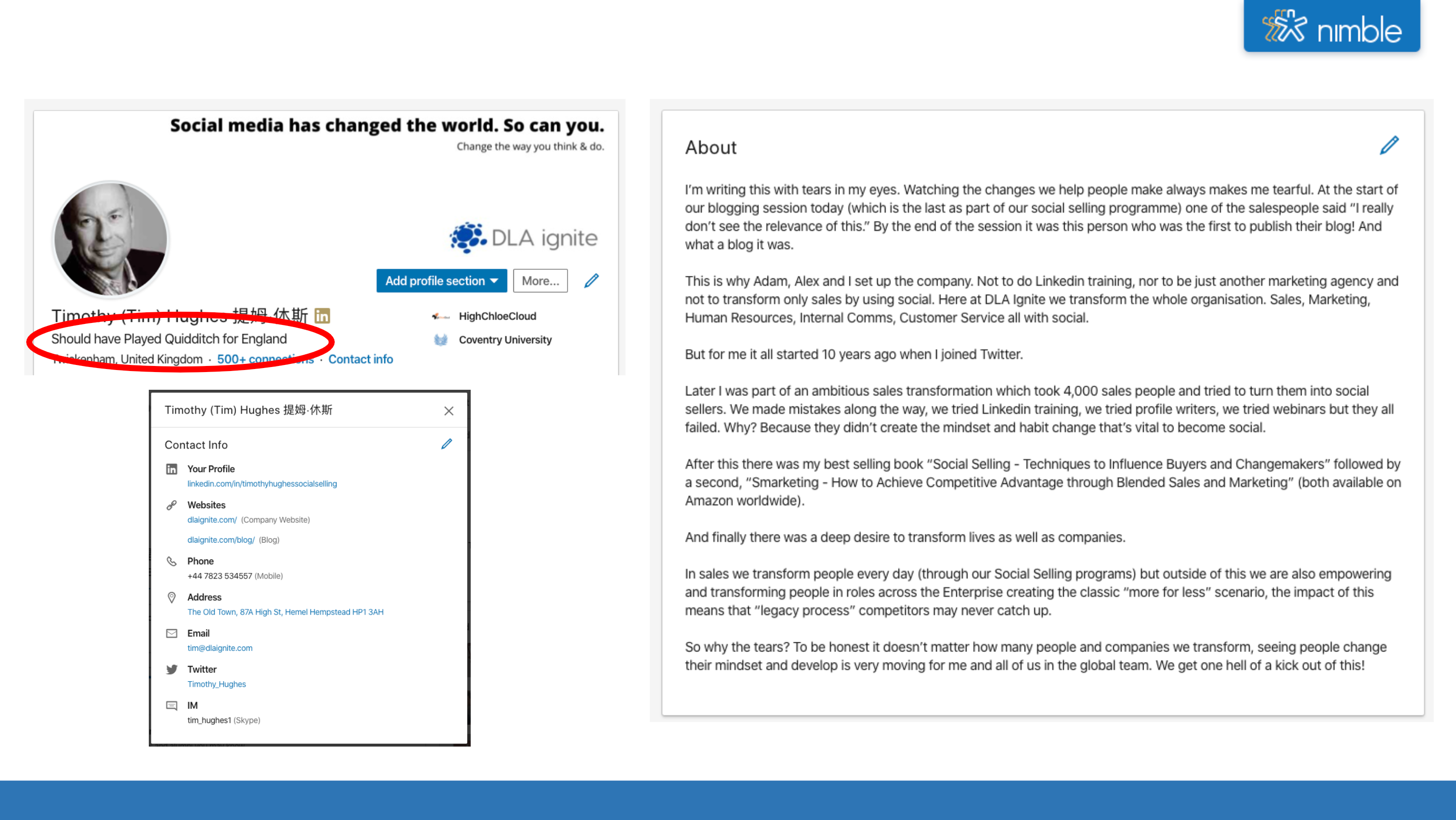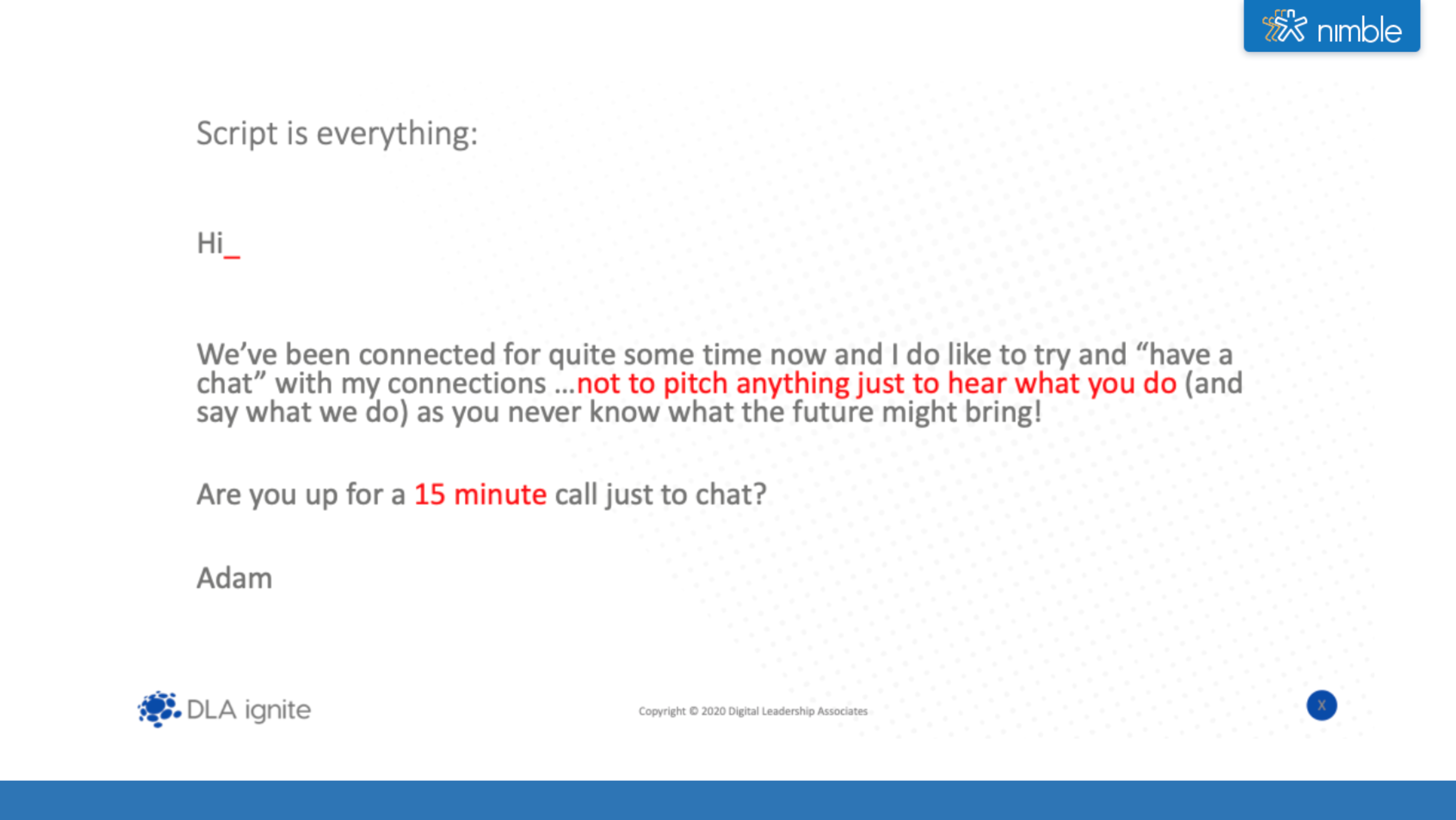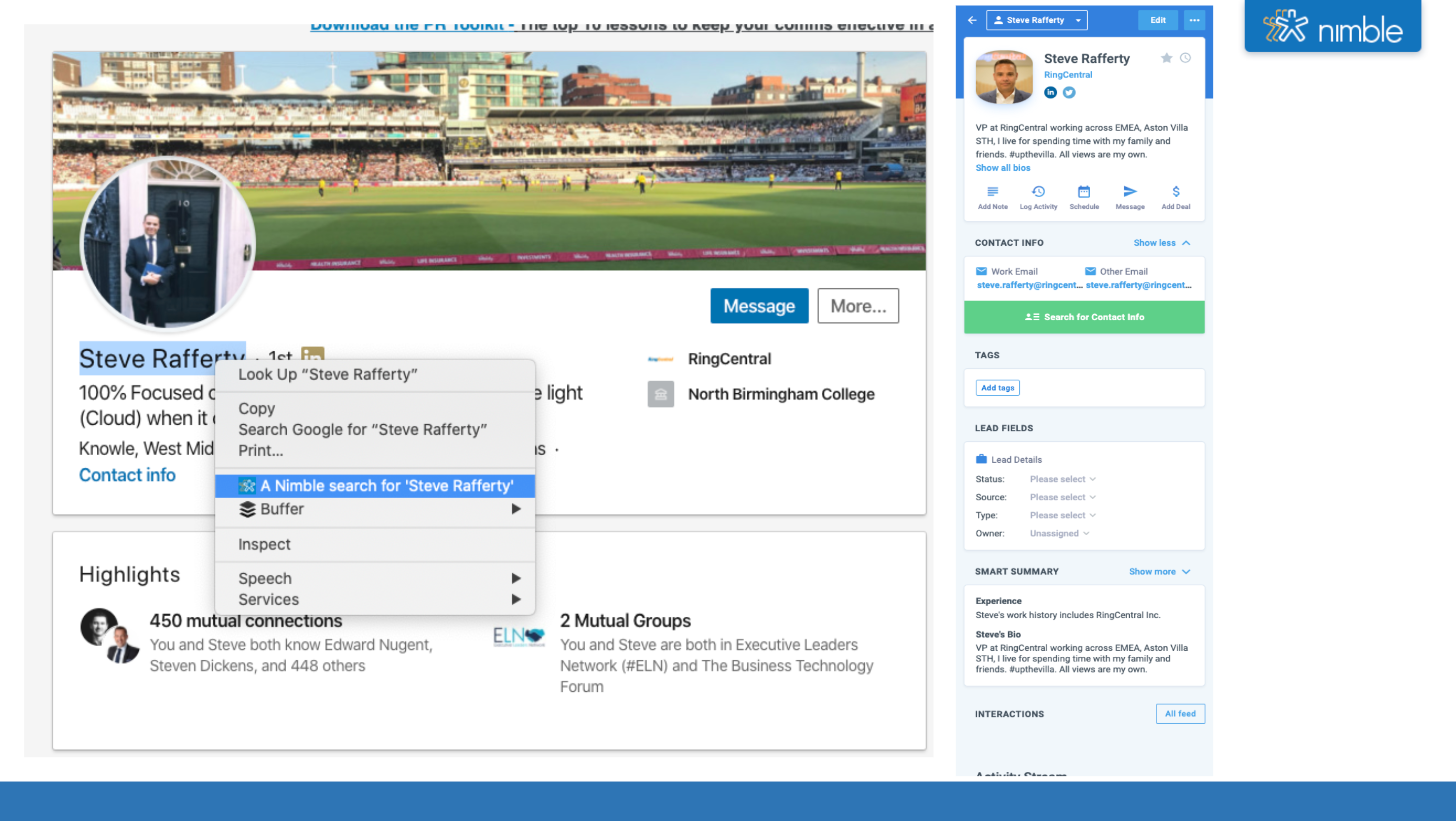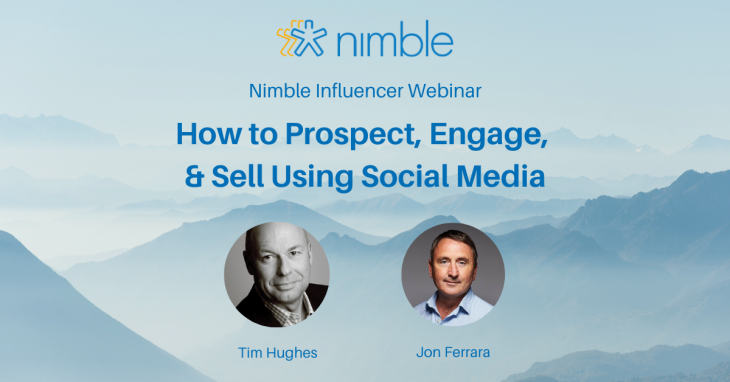Nimble CEO Jon Ferrara and Digital leader Tim Hughes met by connecting on Twitter. As their relationship grew, they eventually met face-to-face when Jon was visiting London. Since their meeting, Tim has developed his own agency to teach others how to sell on social and has written multiple books, including Social Selling: Techniques to Influence Buyers and Changemakers.
Tim is the CEO of DLA Ignite and is the world’s #1 social selling pioneer and innovator. Tim was involved in rolling out the most advanced social selling programs across 2,000 salespeople in Western Europe and now helps companies transform into modern selling machines. In this webinar, Tim Hughes shared his tips and tricks on how to improve your business by leveraging the possibilities of social media.
Why Your Team Should Have Been Using Social Selling, Like, Yesterday
Take a step back and look at the business case for social selling. People think it’s just about posting on social media, but it’s not. Social selling is a strategic way salespeople can get leads and meetings, contract sales through the pipeline, and use it to close deals.
When Tim and DLA Ignite use social selling, they will normally get 8 to 9 meetings per week.
If you just started social selling, you should be able to get one meeting a week — if you’re doing it right. One meeting a week can turn into one potential opportunity per month. As a result, you can close one deal per quarter. However, Tim points out that this is a very conservative estimate. It all depends on your close rate and your ability on how you win. You should be able to be selling through social media in a way that enables you to be generating more business for your company.
How Social Selling Fits into the New World
The world has changed, and it’s changed even more with COVID-19. In Gartner’s research (pre-COVID-19), it says that when the average person goes out and buys, they will be 57% through the buying process before they contact a salesperson. Now with social media, it doesn’t matter if it’s 30% or 80%. We’re all empowered by our phone through which we have access to an infinite amount of content at any given time. If you’re not on social and actively engaged in having conversations, you’re leaving money on the table.
For example, Tim wrote an article six years ago about his friend who was getting 10 meetings a week through Twitter.
Another thing that has changed is the buying process. There are more people involved in the decision-making process; you have to convince everyone in that process to want your product. In order to win everyone over, you have to create relationships and find them on social media. Once you build relationships with them, they will personally like you and actually buy your product. If you don’t know who those people are in the decision-making process, you need to connect with multiple people within the organization and engage with them.
The 3 Things You Need for Successful Social Selling
1. Your Profile is Your “Shop Window”
The first thing you need to have is your profile acts as your “shop window.” When you’re at the mall, you look at shop windows to see if there’s something that interests you. Your profile has the same effect. It creates curiosity for your prospects and customers. It’s important to remember that your LinkedIn profile is your profile, not a company’s profile.
Your summary title is the most visible piece about you on the Internet. If you Google yourself, you will find your picture, name, and summary title. The mistake everyone makes is putting their job title as their summary title. Tim’s summary title is “Should have Played Quidditch for England” and he gets tons of engagement because of it. If you want to create a connection with somebody, it’s not what you do; it’s about why you do it.

Another tactic Tim does is that he purposely misspelled information in his bio for people to point out the mistake. This allows him to know that people are reading his profile and to engage with them.
In your summary, your profile shouldn’t be about your company or your product because you sound like you’re pitching to the reader. Your summary should be your why.
The third thing you should do is make sure your contact details are set up on LinkedIn. It might be a small and simple thing you can do, but most people miss it. Think of your contact details as your online business card.
2. Your “Power” is in Your Network
The power is indeed within your network, and you need to expand your connections with people. Most people’s networks are currently ex-colleagues and recruitment consultants. What you need to do is move your network from analog. For example, Tim explains that his desk has a pile of business cards. He will take those business cards and put them into the digital world.
3. Content and Engagement
Content is an excellent way for you to demonstrate your expertise in your area. Salespeople find curating content to be difficult. You can curate and find content. However, Tim uses a product called Flipboard. Flipboard allows you to search for content that would be interesting to you or your customers by looking for articles that present certain topics you chose.
The important thing about content is that your customer is looking for an expert, somebody they can trust and build a relationship with. Content is an excellent way for you to demonstrate your expertise.
Company vs Personal Social Media Accounts
Nike is one of the biggest brands worldwide and has people advertise that they are the world’s best sneakers brand. The reason why they advertise with people is that people have an affiliation with other people. When your company uses social media, it shouldn’t be all about your company because every company says they’re the best. Companies’ unique selling points are their people.
Creating Conversation
Go to your LinkedIn profile, click on “My Network”, then “Connections.” Tim recommends scrolling back through a reasonable amount of time.
Once you find someone, send them a message – a generic, non-threatening, non-selling message. In most cases, people will message back. Once they respond, do not bring up your product! Instead, ask them what they are up to. After about 15 minutes, they will ask you the same question then you have the opportunity to tell them what you do. Tim has presented this method on a few webinars and the feedback he receives has always been very positive.
Here’s the script if you would like to try it out yourself:

Talking on social is no different from talking to a networking group. After all, social media is about being social. Find your prospects and customers that are active on social and have a conversation with them.
How Tim Uses Nimble to Cultivate His Social Network

When Tim is social selling, he tends to be in two different places – LinkedIn and Nimble. Above is an example of Tim in LinkedIn using Nimble’s browser extension, Nimble Prospector. This extension allows him to take the details from LinkedIn directly into his Nimble database without switching tabs. He is also able to add any notes about the prospect or customers.
For example, if a prospect says to call back in June on Twitter, he can directly add that note in and set a stay-in-touch reminder.
How to Get Started
If you do not have a Nimble account yet, we invite you to try it for free for 14 days.
Stay tuned for more product announcements as we evolve Nimble into the best CRM for Office 365 and G Suite teams.


